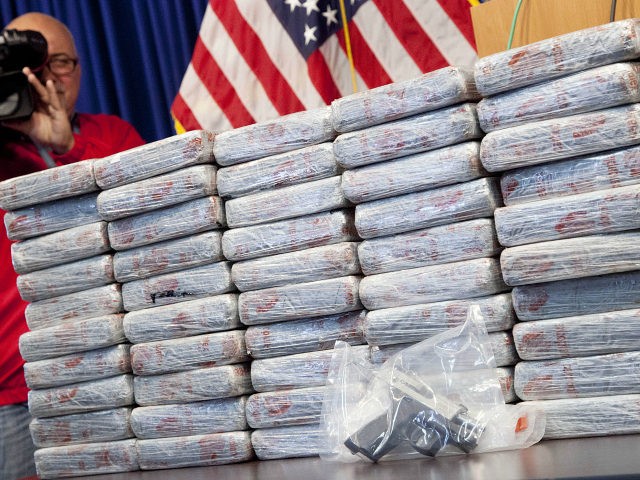Only an estimated one percent of the heroin seized by law enforcement in the United States originates from the Southwest Asia region that includes Afghanistan, the top producer of opium and heroin in the world, reports the Drug Enforcement Administration (DEA) in its latest National Drug Threat Assessment.
The report comes as the Centers for Disease Control and Prevention (CDC) reveals that heroin overdose deaths in the United States have reached historic levels, surpassing gun homicides.
According to estimates from the United Nations, Afghanistan produced 4,800 tons of opium last year, 25 times more than when the United States invaded in 2001.
In comparison, Mexican drug cartels produced an estimated 70 tons of heroin.
The DEA insists that very little of the heroin from the Afghanistan region makes it into the United States because traffickers from Southwest Asia are unable to compete with Mexican drug cartels. These provide a higher potency, cheaper form of the deadly drug.
The DEA threat assessment report states:
Southwest Asian (SWA) heroin is, by far, the most common type of heroin produced in the world; however, its availability in the U.S. market is very low. In 2014, SWA heroin accounted for only one percent of the total weight of heroin classified by the [DEA], down from two percent in 2013, for several reasons.
The domestic supply of Mexico-sourced heroin is more than sufficient to satisfy current U.S. market demand. Moreover, Mexican heroin traffickers are able to keep the supply steady and reliable. This is evidenced by high availability levels in U.S. heroin markets and low retail-level prices.
The purity level of Mexican heroin is also higher than that produced in the Afghanistan region, which makes the drug more desirable to addicts in the United States.
Mexican cartels are reportedly the top suppliers of heroin in the U.S., and they are making a concerted effort to expand the deadly heroin market and increase the availability of the drug.
The DEA reports:
Heroin from all four source areas (Mexico, South America, Southwest Asia, and Southeast Asia) is available [in the U.S.] to varying degrees; however, analysis of DEA heroin indicator programs data, production and cultivation estimates, and seizure data indicates Mexico is the predominant source of heroin in the United States. South America is the second most common source of heroin.
Smaller amounts of Southwest Asian heroin are available in certain areas, but most Southwest Asian heroin supplies markets in Africa, Asia, and Europe.
The DEA estimates are based on seizures analyzed by the agency. In the report, the DEA acknowledges that its estimates only “provide a snapshot of the U.S. heroin market,” adding that “since not all heroin seizures in the United States are submitted for analysis, the source area proportions should not be characterized as market share.”
The DEA has noted in previous drug threat assessments that most of the heroin flowing into neighboring Canada primarily originates in Afghanistan, but it maintains that Mexico and, “to a lesser extent Colombia,” are the top providers of the fatal drug in the United States.
Heroin seizures along the Southwest border (SWB) have increased dramatically from 559 kilograms in 2008 to 2,524 kilograms last year.
The CDC reports that opioid deaths, primarily driven by heroin overdoses, surged in 2015, surpassing 30,000 for the first time in recent history.
Mexican cartels are expected to continue unrivaled as “the greatest criminal drug threat to the United States,” notes the DEA, adding, “No other group is currently positioned to challenge them.”

COMMENTS
Please let us know if you're having issues with commenting.